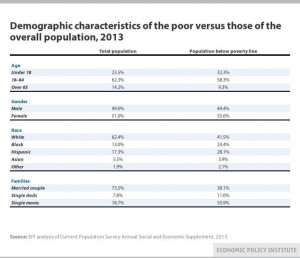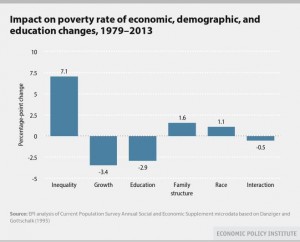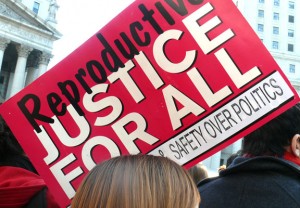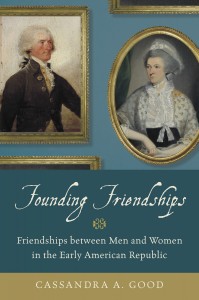
August 26 was Women’s Equality Day. Established in 1971, the day commemorates passage of the 19th Amendment, which gave women the right to vote. But political equality did not begin to extend to economic equality or marital equality until the 1970s, despite passage of the Civil Rights and Equal Pay Acts in the mid-1960s. As late as 1975, women earned only 60 cents for every dollar a man earned, and no state had yet repealed the laws that gave a man immunity from raping his wife.
Since then, women’s progress in upward occupational mobility and earnings has been dramatic. Dual-earner marriages are now the norm, women now outpace men in educational achievement, and growing numbers of wives out-earn their husbands.
For many years, however, women’s gains seemed to destabilize marriages and threaten family formation. As women entered the workforce, marriage rates fell and divorce rates soared. Fertility plummeted, and policy-makers worried that career-oriented women were turning their backs on motherhood entirely. Some early studies suggested that when wives got their husbands to do housework, they were more likely to get beaten up (Fuchs 1988), or at the very least, to have less happy sex lives.
Many of these developments, however, were products of a transitional period of adjustment, especially marked in the 1970s and 1980s, when women embraced gender equality more quickly than did men and experienced widespread discontent with the persistence of traditional marriage and family arrangements.
The gender revolution is nowhere complete, but there is now evidence that the further progress of the gender revolution is in many cases resulting in a certain restabilization of family life.
- In the US and many other countries, divorce rates have fallen among couples who express the greatest support for gender equality. Women’s higher education and earnings now seem to help rather than hurt their marriage chances.
- In Sweden, women with a high career orientation are now more likely to enter a union than other women (Thomson and Bernhardt 2010). And in other countries with strong work-family support systems (Finland and Norway as well as Sweden), dual-earner marriages are now less likely to divorce than male breadwinner ones (Cooke et al 2013).
- In US marriages formed in the early 1990s and since, couples who share housework report higher marital quality and better sexual relationships than those with a more traditional division of labor. And even among older men (ages 51-92) those with egalitarian gender role attitudes report much higher levels of marital happiness than otherwise comparable men with traditional attitudes (Kaufman 2006).

Men’s increasing involvement in child care and housework (Sullivan, et al. 2014) seems to be critical here.
- An analysis of 13 industrialized countries (Sevilla-Sanz 2010) found that men with more egalitarian attitudes were more likely to form a romantic union and particularly to cohabit than men with less egalitarian attitudes.
- Among cohabitors, men who were involved in the care of their children (providing care when the mother was absent, taking children to daycare and medical appointments) were more likely to make the transition to marriage than those less involved (Kotila 2014).
In fact, such men’s involvement seems to make women more willing to have children.
- Studies show that when men are more involved with their children after the birth of a first child, a couple is more likely to have a second child. This is the case both in Sweden (Goldscheider, Bernhardt and Brandén 2013) and the US. In the US, the big difference was between the most sharing couples and those who shared inconsistently (81 percent of the former had a 2nd child compared with only 55 percent of the latter [Torr and Short 2006]).
- This may be why fertility patterns in Europe are changing: In the 1970s, the countries in Europe with the lowest levels of women’s employment (primarily in southern Europe) had the highest fertility; by the 1990s this relationship had reversed, with the countries of northern Europe, which have the highest levels of women’s employment, also having the highest fertility.
References:
Fuchs, Victor R. 1988. Women’s Quest for Economic Equality, Cambridge MA: Harvard University Press.
Kotila, Letitia. 2014. “The role of father involvement in the union transitions of cohabiting parents.” Paper presented at the annual meetings of the Population Association of America, Boston, MA.
Kaufman, Gayle. 2006. “Gender and marital happiness in later life,” Journal of Family Issues 27(6):735-757.
Torr, Berna Miller and Susan E. Short. 2004. “Second births and the second shift: A research note on gender equity and fertility,” Population and Development Review 30:109-130.
Goldscheider, Frances, Eva Bernhardt, and Maria Brandén. 2013. “Domestic gender equality and childbearing in Sweden,” Demographic Research 29 (40):1097-1126.
Cooke, Lynn, et al. 2013. “Labor and love: Wives’ employment and divorce risk in its socio-political context,” Social Politics 20(4):482-509.
Sullivan, Oriel, Francesco Billari, and Evrim Altintas. 2014. “Father’s changing contributions to child care and domestic work in very low fertility countries: The effect of education,” Journal of Family Issues 35(8):1048-1065.
Sevilla-Sanz, Almudena. 2010. “Household division of labor and cross-country differences in household formation rates,” Journal of Population Economics 23: 225-249.
Released originally on August 25, 2015.













